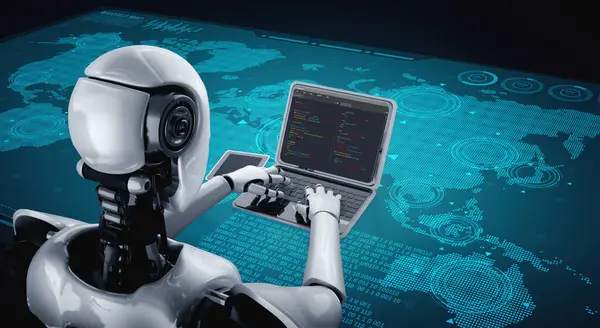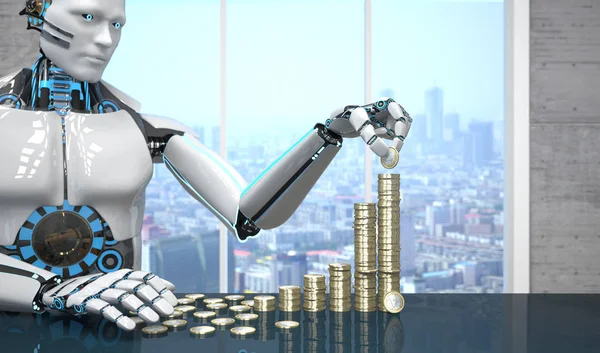Advertisement
We mostly use traditional AI in our daily lives. But they couldn't really see or touch the world around them. This was a big limitation because many real-life jobs could not be done by it. That’s where Physical AI steps in. It combines smart algorithms with real machines like robots, drones, and self-driving vehicles. They can sense their surroundings and act in the real world. These tools help us do many jobs and make our lives easier. So, in this article, we’ll break down what Physical AI is, how it works, and what parts it's made of.

Let’s keep it simple. Traditional AI is smart, but it lives inside a computer. It can look at data, find patterns, and help us make decisions. For example, it can suggest what movie you might like next or help companies understand their customers. But here's the thing. It doesn't have a body. It can't move, touch, or do anything in the real world.
Physical AI, on the other hand, is entirely different. It’s like giving that smart brain a body. For example, robots, drones, or self-driving cars. These machines can see, hear, and feel the world using cameras, sensors, and microphones. Then, they make decisions and act according to the command. For example, they can pick up an object, move around, or even help in a hospital.
Physical AI works kind of like how we do. It goes through a cycle again and again so it can interact with the real world all by itself. Let’s break down how it works step by step:
Just like we use our eyes and ears, Physical AI uses sensors. It has cameras to see and microphones to hear. It also has other tools like radar or LiDAR to understand space and distance. These sensors help it notice what's around it, such as objects, people, or even the temperature.
Once it gets all that information, the system starts thinking. It uses smart programs (like machine learning or deep learning) to make sense of everything. It recognizes objects, figures out where things are, or predicts what might happen next. And it does all this very quickly, right there in the machine.
Based on data and learned experiences, it makes a decision. For example, a robot might turn left to avoid an obstacle. It can even learn from past mistakes, thanks to reinforcement learning. It is an efficient way to improve by trying, failing, and adjusting over time.
Now it’s time to move! Using motors, wheels, robotic arms, or speakers, Physical AI can move around, grab things, or even talk. These movements come from the decisions it made earlier. After taking action, the sensors check what happened. It's kind of like looking back to see if what it did worked. If something doesn't go as planned, the system can learn from it and improve next time. This loop continues: sense, think, decide, act, and learn again.
Physical AI works through a smart combination of many components. It has sensors that act as the system’s eyes and ears. These sensors collect data through cameras, LiDAR, radar, and microphones, helping machines understand their surroundings. Moreover, it has actuators that are like muscles. They carry out physical tasks such as moving arms, wheels, or even speaking.
The brain behind it all is the AI processing unit. It is powered by chips like GPUs or TPUs that make fast decisions using sensor data. These decisions are then turned into actions through control systems. Together, these systems form a layered system that can make decisions according to command.
Physical AI is already part of many industries. Here’s how it helps in real life:

Physical AI has many benefits, but it also faces big challenges. One major issue is dealing with real-world environments. Robots find it hard to adjust quickly. Another challenge is movement. Robots can repeat tasks, but they lack human-like control and precision. Building Physical AI systems is also costly. The parts, software, and skilled workers add up the cost.
Physical AI also can't easily understand complex or messy situations, making it hard to use in homes or outdoors. Energy use is another problem. Robots use a lot of power and need frequent recharging. We need better sensors, smarter software, and safer systems to fix these issues. With these improvements, Physical AI can grow and help even more.
The game of physical AI is just starting. It will become smarter and more helpful in the upcoming life. But, for now, we could only dream of having robots that will assist us at home or respond to emergencies. Physical AI can make that possible. We're just beginning this journey, and the future looks promising. But like every other technology, we need to operate it with the right care and planning. In this way, we can make many changes in our lives.
Advertisement

Boost your productivity with these top 10 ChatGPT plugins in 2025. From task management to quick research, discover plugins that save time and streamline your work

How to use Python logging the right way. This guide covers setting up loggers, choosing levels, using handlers, and working with the logging module for better debugging and cleaner code tracking

Discover key differences: supervised vs. unsupervised learning, when to use one or the other, and much more.

Understand how mixture-of-experts models work and why they're critical to the future of scalable AI systems.

Want to run Auto-GPT on Ubuntu without Docker? This step-by-step guide shows you how to install Python, clone the repo, add your API key, and get it running in minutes

Curious about OLA Krutrim? Learn how to use this AI tool for writing, summarizing, and translating in multiple Indian languages with ease

Curious about Arc Search? Learn how this AI-powered browser is reshaping mobile browsing with personalized, faster, and smarter experiences on your iPhone

Looking to edit music like a pro without being a composer? Discover Adobe’s Project Music GenAI Control, a tool that lets you create and tweak music tracks with simple commands and no re-rendering required

A venture capital firm announces funding initiatives to support early-stage startups building innovative AI tools.

Learn about fintech’s AI challenges: explainability gaps, synthetic identity fraud, compliance requirements, and others.

Explore real vs. perceived risks of AI beyond fear-mongering and media hype in this balanced, insightful analysis.

Learn the basics of Physical AI, how it's different from traditional AI, and why it's the future of smart machines.